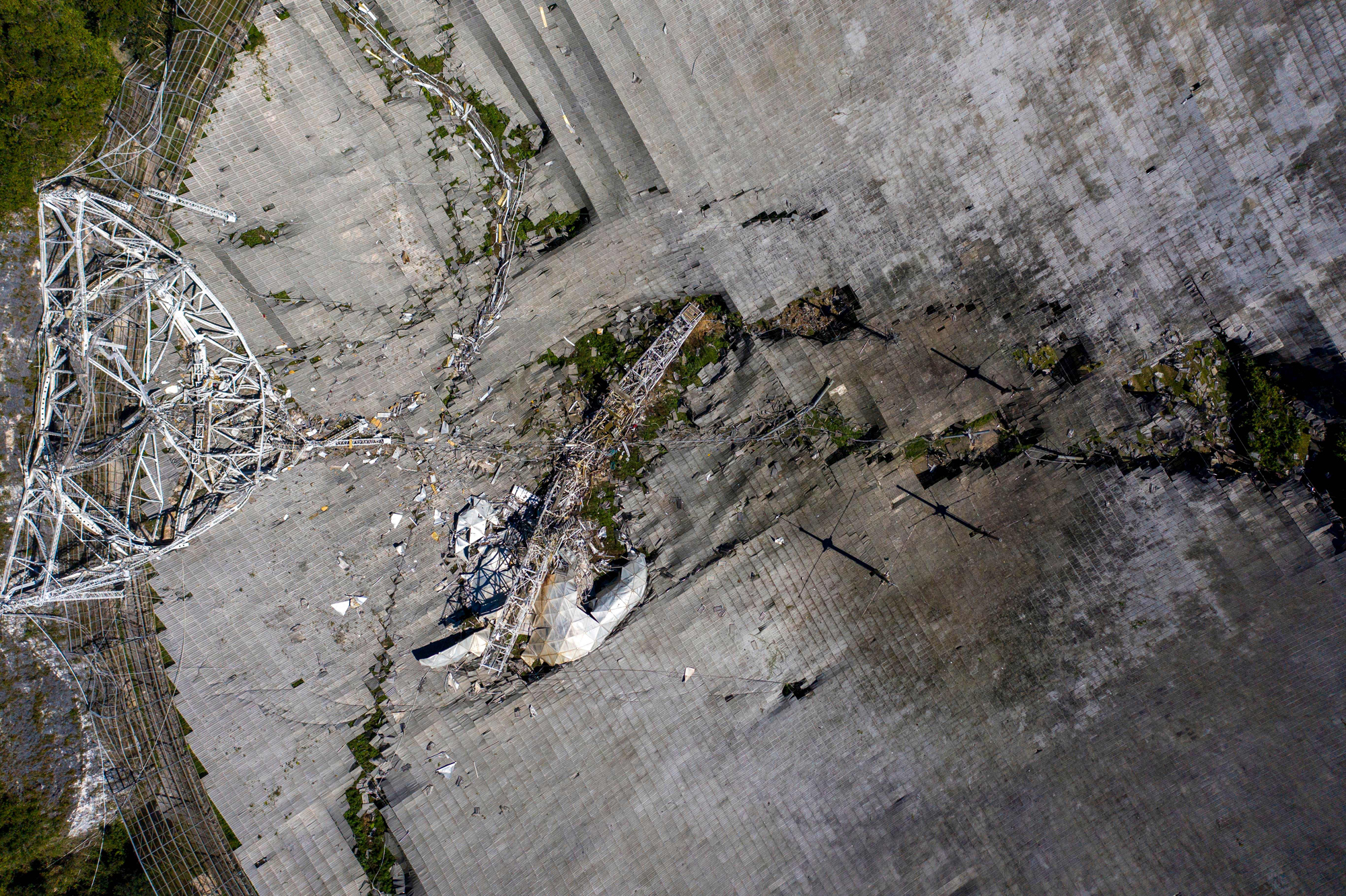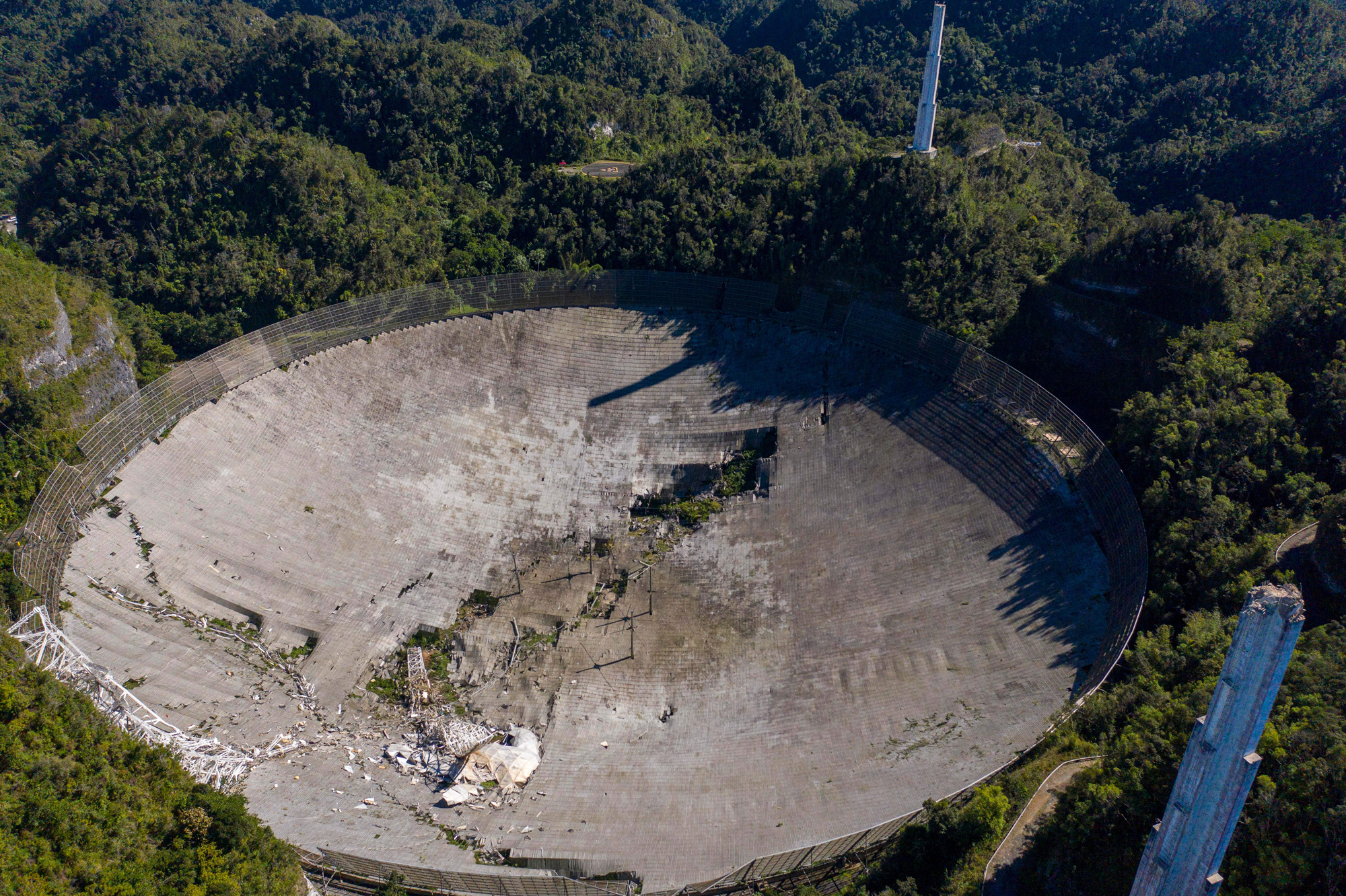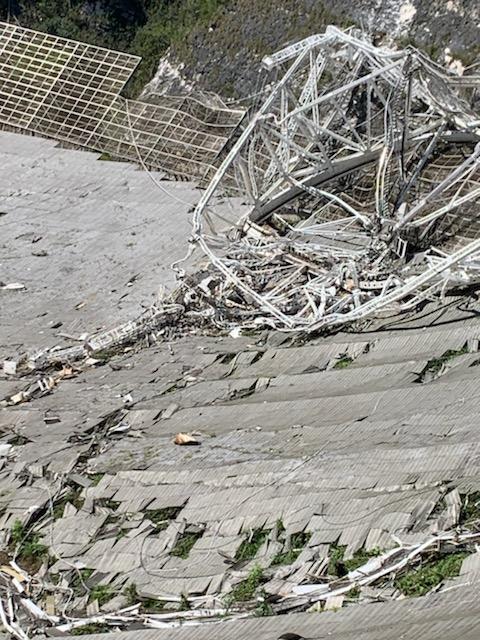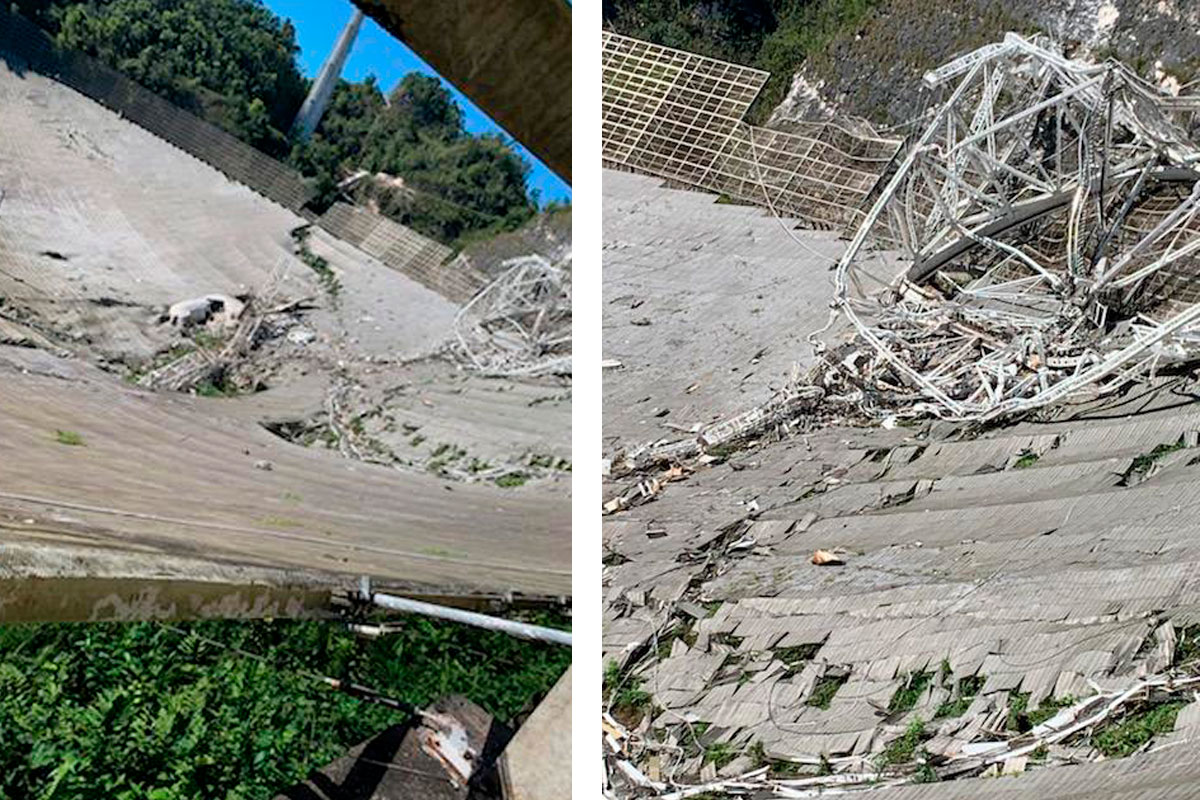These photos of the Arecibo Observatory telescope collapse are just heartbreaking
An icon of astronomy is in ruins.

Gut-wrenching pictures and video documented the beginning of the end for one of the world's most iconic telescopes.
The National Science Foundation's Arecibo Observatory in Puerto Rico, known for its studies of asteroids and aliens and for its cameo in a James Bond film, collapsed this morning (Dec. 1). The 900-ton platform that hung above the radio dish fell 450 feet (140 meters) into the structure below around 8 a.m. local time, causing massive damage documented online.
The pictures of the destruction are sad, although the situation was not a surprise after the National Science Foundation announced days ago it would need to decommission the observatory following hurricane and cable damage at the famed observatory.
Related: The Arecibo Observatory radio telescope in Puerto Rico has collapsed



"We heard a loud sound, a loud bang outside the control room. We started to see the eventual downfall of the observatory," Ángel Vázquez, chief of telescope operations and a worker at Arecibo for four decades, said in a video posted on Twitter.
Pointing at a large poster-picture of the cables holding up Arecibo's platform, Vázquez said that through the past week those working at the observatory saw strands coming off the remaining three cables holding up the platform on one side. The strands were sure signs of more stress coming on the cables due to fewer of them holding up the platform's weight, he said.
"Eventually, it just gave way," he said. The other side of the platform still had cables under tension, he added, so the platform didn't suddenly fall, but took approximately 30 seconds to glide into the radio dish.
Sign up for the Live Science daily newsletter now
Get the world’s most fascinating discoveries delivered straight to your inbox.
Related: Losing Arecibo Observatory creates a science hole that can't be filled
Ángel Vázquez explains the collapse of the Arecibo Observatory @SaveTheAO. 1/2 pic.twitter.com/7VCZNCFsA4December 1, 2020
Drone footage taken after the collapse shows the crumpled cable towers lying on top of the dish, with tower pieces and other debris scattered around the area. Numerous pictures posted on Getty Images by photographer Ricardo Arduengo of Agence France-Presse show the radio dish elements split in the middle from the force of the fall.
"Engineers are on-site. Top priorities are maintaining safety at the site and assessing damage," NSF said on Twitter, along with a closeup of the damage showing crumpling in the radio telescope.


"We knew this was a possibility, but it is still heartbreaking to see," Elizabeth Klonoff, vice-president for research at UCF, said in an NSF statement. "Safety of personnel is our number one priority. We already have engineers on site to help assess the damage and determine the stability and safety of the remaining structure. We will continue to work with the NSF and other stakeholders to find ways to support the science mission at Arecibo."
Follow Elizabeth Howell on Twitter @howellspace. Follow us on Twitter @Spacedotcom and on Facebook.

Elizabeth Howell was staff reporter at Space.com between 2022 and 2024 and a regular contributor to Live Science and Space.com between 2012 and 2022. Elizabeth's reporting includes multiple exclusives with the White House, speaking several times with the International Space Station, witnessing five human spaceflight launches on two continents, flying parabolic, working inside a spacesuit, and participating in a simulated Mars mission. Her latest book, "Why Am I Taller?" (ECW Press, 2022) is co-written with astronaut Dave Williams.











